The Best Party Trick Ever: How to Make Thirty Minute Mozzarella
The following is a guest post from Andrew Wilder of Eating Rules. Welcome, Andrew!
A couple of years ago at a Fourth of July party, I pulled off one of my best party tricks ever.
Showing up with a gallon of milk in hand, I asked my friends if I could borrow their kitchen. Spying the other items in my bag — a bunch of fresh basil and cherry tomatoes — they knew I had something good in store. They eagerly let me take over.
Half an hour later, I emerged victorious from the kitchen with a platter of fresh caprese, made with still-warm mozzarella.
I’ve been using this “30-minute Mozzarella” recipe, from Ricki Carroll’s book, Home Cheese Making, for a few years now. I’ll admit, it comes out slightly different each time (the type of milk, how quickly you heat it, and how much you stretch it will affect both the flavor and texture), but it’s always been a big hit.
Homemade Mozzarella Tips & Tricks
1. This is a great recipe to make with kids. They’ll be completely mesmerized watching the milk curdle and turn into cheese — and it happens quickly enough to hold their attention. The last few steps can get pretty hot, so please do be careful when making this with children.
2. Do not use “Ultra-Pasteurized” milk for this recipe — it won’t curdle properly. If it says just “Pasteurized” on the container, you’re probably fine. Of course, you can also use raw milk instead, if that’s your thing (I’m not going to get into the pros and cons of raw vs. pasteurized milk — just remember that Ultra-Pasteurized is a dealbreaker.)
3. Depending on the fat percentage of your milk, you’ll get a very different cheese at the end. Whole milk produces a very rich, soft mozzarella, whereas 1% will make a harder, more string-cheese-like cheese. Fat free can get a bit too rubbery, so I don’t recommend it. I usually use 2%, which is what’s shown in the pictures here.
I’ve also made this recipe with goat’s milk, and it should work fine with sheep’s milk as well.
4. This recipe is a “shortcut” to mozzarella, since it uses a microwave to speed things along. If you don’t have a microwave, you can use a pot of very hot water and float a bowl in it instead. The goal is to get the curds hot so that they melt together and become stretchy like taffy. Also, the curds will get quite hot — it’s really helpful to have a pair of clean kitchen gloves to protect your hands.
Thanks go to my friend Sarah, who eagerly offered to model for the photos in exchange for some fresh mozzarella.
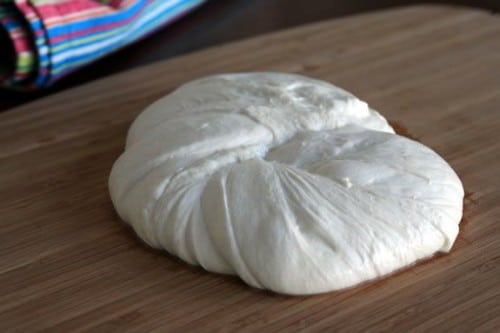
Recipe: Thirty Minute Mozzarella
You can probably find citric acid at a good grocery store, but rennet is harder to come by. You can order it online at several retailers; I’ve purchased it from New England Cheesemaking Supply and Grape and Granary.
You can also just get one of Ricki’s Mozzarella and Ricotta Cheese Making Kit, which have everything you need, including a dairy thermometer.
I prefer to use liquid vegetarian rennet, which New England Cheesemaking Supply sells at double-strength, so I use 1/8 tsp. for this recipe.
Ingredients
- 1 gallon Milk, not ultra-pasteurized
- 1 1/2 tsp. Citric Acid powder, dissolved in 1/4 cup room-temperature water
- 1/4 tsp. Liquid Rennet or 1/2 tablet Rennet, dissolved in 1/4 cup room-temperature water
- 1 tsp. Cheese (Flake) Salt or Kosher Salt
Instructions
1. Pour the milk in to a large pot. On medium-low, heat slowly to 55 degrees Fahrenheit. Stir slowly and continuously to keep from scalding.
2. Once the milk reaches 55 degrees, pour in the citric acid mixture and stir well. Keep heating.
3. When the milk hits 88 degrees, add the rennet mixture and stir well. Right around this time the milk will start to thicken, and you’ll see little white flecks stick to your spoon as it starts curdling.
4. Once the milk is in the 90-degree range, it should be noticeably curdled. Stir very gently at this point, if at all — you want to encourage the curds to knit together.
5. Between 95 and 105 degrees, the curds will be quite thick. Turn off the heat once they start separating from the sides of the pot, and there’s a very clear distinction between the curds (white clumps) and whey (yellow liquid).
6. Let the curds rest for 5 minutes.
7. With a perforated or slotted spoon, ladle the curds into a bowl. The curds will continue expelling whey once they’re in the bowl, which is fine. Once you have pulled most of the curds out of the pot (some little bits will probably still be floating about), pour any excess whey back in the pot.
8. Using a microwave, heat the curds for 60 seconds. Drain off any excess whey, then fold the curds over once, then once again. This is to distribute the heat evenly.
9. Microwave again for about 30-40 seconds, depending on the strength of your microwave. Pour off the whey.
10. Sprinkle the salt onto the cheese, and then fold the curds over twice again. Put them back into the microwave for another 30-40 seconds. Pour of any excess whey.
11. At this point, the cheese should be very hot, and look like melted mozzarella!
12. Stretch the cheese, and then fold it back on itself. If it tears when you try to stretch it, the cheese is not hot enough; just repeat the microwaving process. Stretch it again once or twice. If you want a more string-cheese like cheese, do it a few more times.
13. You can then twist or braid the cheese, or tear off pieces and roll them into small balls. If you’re going to refrigerate the cheese for later, drop it in a bowl of ice water to get the temperature down quickly. Otherwise, just dig in while it’s still warm!
Editor’s note: Don’t toss that whey! You can use it in pancakes or crepes.
What do you say, are you up for a ‘cheesy’ party trick?

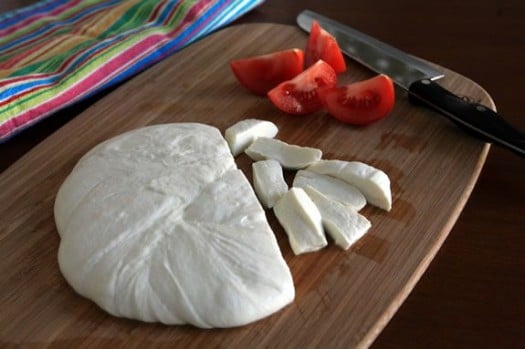
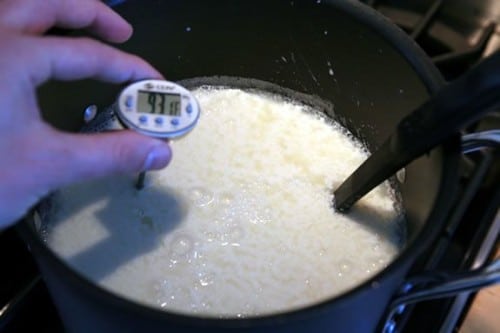
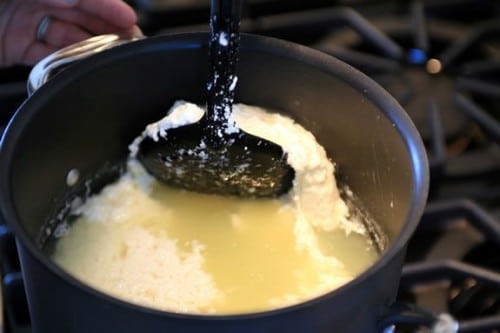
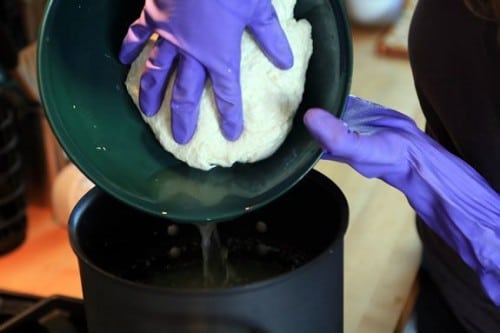
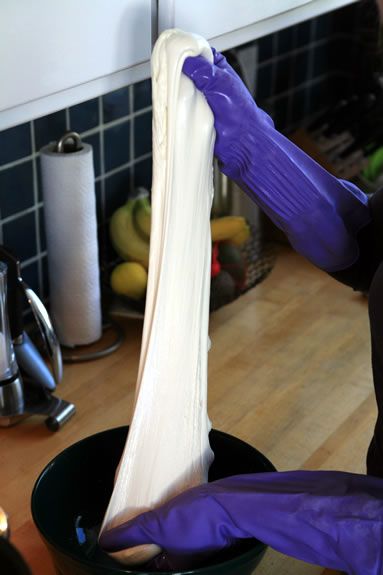
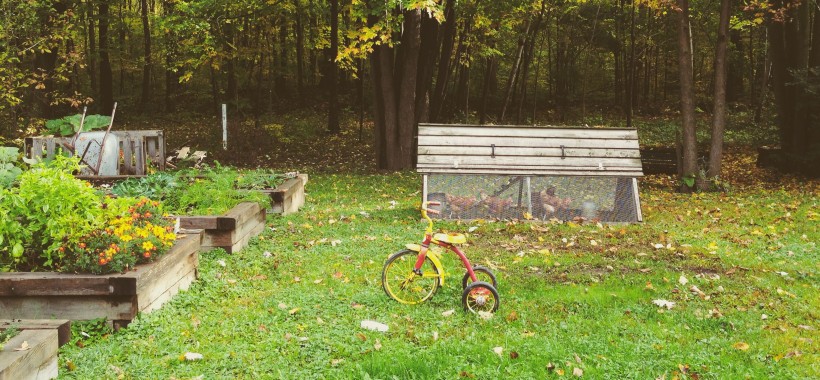
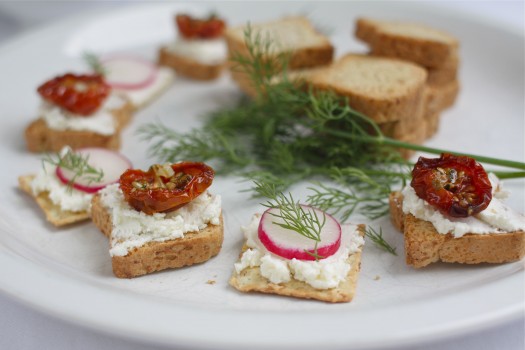

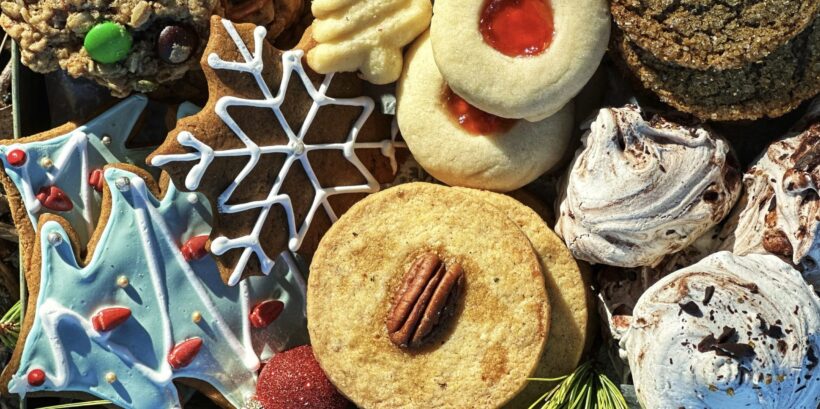
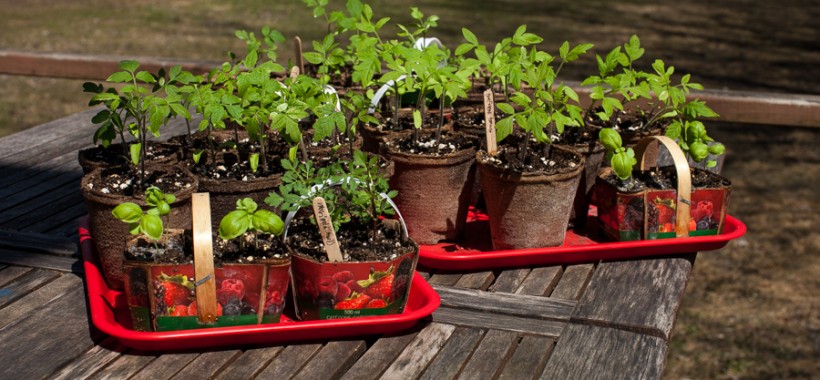
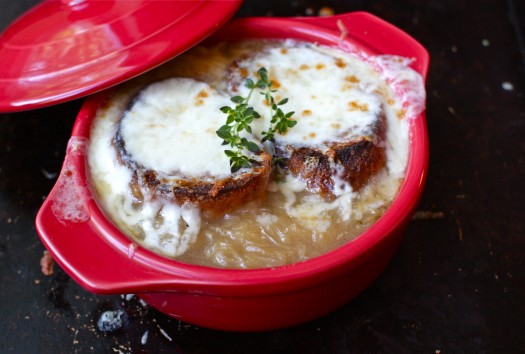
I saw someone had asked about making this non-Dairy. Would a lactose free milk work? It is basically milk but with very low lactose. I am just recently lactose intolerant and am missed cheese sooooo much. I would love to make my own if I could.
I am lactose intelorant, a lot; however, i am able to eat part skim sorrento mozzarella cheese without lactaid tablets. Pizza made with only this cheese doesnt bother me either. But it seems the part skim is the main thjng to remember.
To my knowledge, all lactose free milk is ultra pasteurized so you will not be able to make cheese out of it.
There are a few types of lactose-free cheeses that you don’t have to make at home:
http://www.livestrong.com/article/275494-what-cheeses-are-lactose-free/
Lactose intolerance drinks goat milk for that reason they can’t digest cow’s enzyme in milk. You can use goat milk in place of cow milk. Lactaid will not work for this recipe. Non dairy milk will not work.
I am able to eat extra sharp cheddar that is aged aging losses the lactose. You could try it.
most people that are lactose intolerant can drink “RAW” milk fine, well over 90% anyway. if legal in your state try that. Works better for cheese making too.
Followed this to a ” T” using goat (fresh, raw )milk. with two thermometers , checking and re checking steps and it didn’t work at all. ..not even a little bit! Has the consistency of farmers cheese only more gained and really sour. My experience with goat milk is it doesn’t cuddle the same as cow due to the cassien proteins. ..your thoughts? Advice?
did you use tap water that has chlorine in it? You have to use bottle water. I used it twice before I was told not to, I used bottle water and it came out great.
Also if your using Junket rennet tablets you need to use 1 and a half to 2 tablets. That is what worked for me. Bottle water and 2 Tables of Junket. Now using the liquid much better.
Did you heat to 105 Fahrenheit or Celsius? The temperatures listed are in Celsius. If you used Fahrenheit it will be too cold.
It does say Fahrenheit in the instructions.
Hi do you know where I can buy rennet for making the cheese?
You can get the rennet in liquid animal or vegetarian and the rennet tablets on amazon.com or go to cheesemaking.com…the cheesemaking .com site is the New England Cheesemaking Supply Company and they will have everything you need and then some. Amazon has it for a bit less money and prime shipping which is the free 2 day shipping. Hope this helps hon. Happy cheese making! 🙂
you have to treat the goat milk with a special solution i have a cheese book that tells me how to do all this. It is best to get one and if you go to amazon.com you can find all kinds of things there for making cheese.
I have raw goats milk but hesitant to make this because of the comment above…. what advice can you give for that situation?
Also, I do not own a microwave – what would you suggest as an alternative?
Thank you!
I made this using milk from my Nigerian Dwarf Goats. It took an hour and I let the milk cook to 117 instead of the 105.
I found Junket rennet tablets with the instant pudding mixes and Ball citric acid with the canning supplies at the grocery store. My health food store sells Organic Valley grass fed non-homogenized whole milk. I now have fresh mozzarella . Thank you.
We are horribly struggling! We went through 2 gallons of milk today, one generic, store-bought, the other local, and had pretty much the same results. As others have mentioned, it was ricotta-like and the curd didn’t stick together at all. The second batch, we let it hang out around 100 degrees for about 15 minutes and it seemed better, but still like a thick ricotta cheese and microwaving it only mildly helped. I tried to stretch it and it just broke apart. We’re going to wrap it up in cheesecloth and try tomorrow I suppose
Try using Trader Joe’s Cream top milk. That will do the trick.
to make the best mozerella cheese you need to use 2% milk for best results in this method.
Exactly the same as David… I’ve been over 2 gallons and the same result and is whole milk (no ultra-pasteur.) … the water is filtered… and the resul is a thick ricotta, nothing close to starchy mozzarella! 🙁 …
Sorry autocorrect to starchy but was stretchy.
The difference between ricotta and mozzarella are pretty small. Leave out the rennet or add it too late and you have ricotta. Possibly heated too fast? One variation I have seen in mozzarella recipes is that when you add the rennet to remove from the heat once it is stirred in and be sure to let it sit without stirring to give the curd a chance to form. If you keep stirring it prevents the curd from knitting and you end up with ricotta. When curd is set, cut it with a knife and then place back on heat to warm to 105 making sure to not stir until it is at 105. Once at 105, remove from heat and let rest for 5 minutes. then continue with straining and stretching.
What power setting when you microwave? Full? Like the other person, also curious how to finish if you don’t use a microwave.
Microwave should be on regular high setting, depending on your wattage, if it is very high i would do 20 secs the first time and 10 secs each additional time till the cheese starts coming together. When it is stretchy and the consistency of your liking, put it in ice water. Or if you prefer to put in EVOO and season. And anyone who is trying to make cheese and it doesn’t come out, you can always use the cheese for riccotta cheese. This can always be frozen. So hang in there people and keep trying.
To make without a microwave, you instead use hot water. With a bowl of water near boiling, about 185 degrees F, you place the curd in a strainer and lower into the water for 2-3 minutes which allows it to start melting together. Fold the cheese a few times and if needed return into hot water to help soften it up. Around 135 F is ideal temp to add the salt and fold until smooth. Once formed into a ball drop in ice water bath to bring temp down fast or as this article states, serve warm.
What does the salt do? I’m on a sodium restricted diet, and was wondering what happens if someone cuts the salt in half, or leaves it out entirely. Would be fun to make with my son if I could make it without the salt.
The salt adds flavor. I tried making it with very little salt and it was extremely bland.
My family has made String cheese for years, though we buy the curd….we never add salt directly to the cheese, instead we put the salt in the ice water bath. The “ball” actually sits in the bath for 30 plus minutes, then put on cookie rack to let excess water drip off.
Can someone tell me how to print this? Or is there a way to make it printer friendly?
Thanks.
Copy & paste the text (and pictures) into a Word Document.
Just left click (holding down) your cursor over the desired text/photo area, and ‘drag’ the cursor over the area to capture everything. Once the desired area is highlighted, right click your cursor, and select ‘copy’ from the drop down menu. To ‘paste’, simply right click on the blank document, and select ‘paste’ from the drop down menu.
Hi, I pulled down File Menu, clicked on Print Preview, You can adjust the orientation and zoom percentage from that screen. Also, select exactly which pages you want to print. Click print icon.
to copy: Click the Control button on the lower left corner and the the p (for print) the article will print as you tell it in color or black and white ( as I do) says 19 pages and I only wanted redipe so watch for the bottom of page and on your printer click the stop button and not waste paper. Takes 5 sheets.
It’s nice you want to be followed, but where are the share buttons for those sites ??
Can I use powdered or evaporated milk to do this?
Nope. Needs to be fresh milk.
What if you don’t have a microwave? We tossed our old one out and refuse to buy a new one, saving us a lot of counter room.
Can this be done without adding salt?
I just made it with less salt than recipe called for ( bc someone mentioned recipe was too salty). I probably would increase to the recipe amount next time. You don’t NEED the salt – the cheese is complete by the time you add it. It does bring out the flavor!
I would taste some at that point in the recipe to see if you want to add it or not.
I made mozzarella growing up. I haven’t lately. But the way I did it was put the finished cheese in a cold brine water for 5-10 minutes.
Absolutely. I never put any salt into my mozzarella and is great. You can always play with the spices before serving. We prefer loads of fresh basil and chives instead of salt added just before being served and consumed.
Can this be done with soy milk?
No, the protein in milk that causes this cheese to stretch (casein) is not present in soy milk. You can make other kinds of cheeses with coagulated soy milk (essentially tofu, since the process to get tofu curds and whey is almost identical), but not mozzarella.
I did use the advice that one person gave, which was if using the rennet tablets, to use 1 1/2 but my cheese came out great! The only thing I had to do different was microwave it a few extra times and fold it more than twice. Once I started folding it more, the consistency really came together. But definitely great taste. Hopefully next time, it will take around 30 minutes, cuz since it was my first time, it took almost two hours. Honestly, at first, I thought I’d end up wasting a gallon a milk. But I didn’t and it was a GREAT recipe! Thanks!
just wondering- why did it take two hours? We drink skim milk, so i had to run out for 2%, but I looked at the time when I started and it took 25 minutes from the time I walked in the door. Did you have trouble with something?
Don’t be discouraged or give up folks. Mozzarella is one if the harder cheeses to learn to make if you have no cheese experience. I teach cheese making in Michigan, and I always start with this, because, everyone wants to make it. Easier to teach it than have them bitch it and give up.
You do NOT need to use salt our can cut it way back but you will give up some flavor. I recommend using at least a little and adding other stuff to flavor it.
I do not think this, recipe can be . Used with soy milk, and do not think you will get desirable results with powdered milk. That would be more costly as well. For those of you attempting to make it from goat milk, you need a little more rennet. Junket tablets really not the best, but not everyone keeps liquid rennet in their fridge. So double up. Also goat milk will have a softer Curd. Even if it’s granular, strain it in cheese cloth and continue with the recipe. Older milk needs less citric acid than does very fresh, as the, milk acidifies slowly as it ages.
Please feel free to email me at [email protected] if you need more help.
Happy cheese making
Tiffany
WoodSpryte Farm
you can get liquid rennet on ebay for under 10 dollars!!!!!
Just buy the curd already made
Just made this for the 1st time. Did not realize my thermometer didn’t register the lower temps- so I did without one. 1st step- added citric acid when the milk lost its chill, then added the rennet just when the needle started to move.
Other than that ( and reducing the salt a little), followed instructions and VOILA! Awesome fresh cheese for our fresh pizzas for dinner tonight.! Thanks for posting this!!!
I tried this and the first time was not successful. You MUST get all the whey out after the straining and the first microwaving or it will incorporate the whey back in. Came out great the second time!! And the mozzacotta (as my husband called the first failed attempt) was pretty tasty too!
Second batch, semi fail. Used skim, but my end result was super rubbery cheese. Was it; nuked to many times, wrong temp adding something, skim milk, or what? Sad to have a batch that I probably won’t eat. Please help.
Hoegger supply company has everything you need for making cheese. Rennet, citric acid, etc.
If your cheese comes out like ricotta, keep heating it and kneading it. Most ALL milk at the grocery store is now ultra pasteurized to some degree (meaning held at a higher temp for a longer time than regular pasteurization). It may take 8-10 heating and kneading steps! Raw milk is quick, but grocery store milk takes forever. I’ve had great luck with goat milk and it’s my favorite mozzarella. If it doesn’t look stretchy and solid, just keep heating and kneading.
Don’t refrigerate mozzarella!
Could you make this recipe without a microwave?
I made this with my 8year old granddaughter. We had fun, but was very disappointed as it only made approximately 1/2 cup of cheese. Is this all that comes out of a gallon of whole milk or did we do something wrong.?
I just made it the first time, and at first I only got a little cheese, but then I added in more citric acid and junket and poured the whey back into the mixture and let it sit warm a few more minutes and I got a lot more out…probably about 1 pound.
I tried this and I got it on my first shot! Although, I haven’t eaten it yet so I’m not too sure about how it’s going to taste. It doesn’t make a whole lot, maybe a small grocery store ball of cheese. I think the pictures over exaggerate how much it makes haha.
1st attempt followed directions exactly, using exact ingredients plus the 2 rennet tabs and distilled (bottled) water mentioned in one of the comments. Added at 55 C and 88 C, just like it said, but the milk only sort of curdled and the curds never came together. I now have milk soup with small white flecks in it, that looks kind of yellowish with foam on top. Any suggestions?
Hi Scott – temperatures in the post are Fahrenheit, not Celsius (I mention Fahrenheit in Step 1).
I never use a microwave & don;t have one. How else can this cheese be heated up to achieve the proper temperature? In the oven? Back in the pot?
I guess nobody read everything on this page. It says if you do not own a microwave you can use a pot of very hot water and float a bowl in it… the microwave is the shortcut…
I’m glad SOMEBODY said it..THANK YOU ! 😉
Definitely going to give this a go. The only concern is sourcing the correct milk.
Easiest milk for me to get is a homogenised and pastuerised, any idea how that will go?
You need the least processed, freshest milk possible for the best cheese. If you can get milk which is not homogenised it will be better. I follow a different method and don’t recommend using a microwave because you have to keep a proper eye on temperatures.
I did this for the first time today with 1 gal whole milk from Costco. Turned out awesome! I let it heat to 105 and used the 1/8 tsp of liquid tenet. Came out amazing.
I found this recipe didn’t work at all! I ordered the rennet and citric acid online, I used 2% milk, I used the exact amount of milk called for and had a thermometer and I heated using celcius as that only made sense. I read comments from other people. I couldn’t have gone wrong.
The recipe was a total waste of time and money.
Hi Deborah,
The temperatures in the post are in Fahrenheit (you’ll see I referenced Fahrenheit in Step 1 of the directions)… Sorry you missed that detail!
– Andrew
Does it matter if it’s vegetable or animal rennet?
Nevermind gah! I read the whole thing again. Thanks! Sorry!
It was 17 degrees celsius here in New Zealand today so would I have to chill the milk down to 12.8 degrees as 55 Degree Fahrenheit = 12.7777778 Celsius
Can someone tell me if I follow this recipe, how much mozzerella cheese will I get? Some I can use now and some to save? But how much?
This is quite different. But same like preparing paneer like by adding citric or vinegar to boiling milk. Anyways thanks for the recipe. Very interesting.
Kitchen gloves? Are these the Playtex gloves you get in the supermarket?
Made this today and my husband and kids loved it! Thanks for such an easy recipe! This is a keeper for sure!
microwave?
i’m on my phone now w a small screen & haven’t read all the comments…
i haven’t used a microwave oven in over a decade.
what’s the alternative for folks who use ranges and ovens but not microwaves?
55 Degree Fahrenheit = 12.7777778 Celsius that’s colder than our room temperature so I guess I would not need to cook this at all.
to the people confused about the temperatures being Fahrenheit vs. Celsius, milk is refrigerated at about 38-40 degrees Fahrenheit, so you actually need to heat it to get to 55 degrees.
Hi,
I did this and the first time worked perfectly! i loved it! The second time though, my curds seemed to stay curds, no matter how long I nuked ’em for…same microwave, whole milk both time, same bottle of rennet 2 days seperate, same bottle of citric acid, same bottle of salt…any idea why?
What is the total cheese you’ll get from this? Followed directions and I got about two cups of cheese. Almost 2/3 of the gallon (whey) was still in the pot!
Am I the only one who read this thinking 1) What a lot of work for little reward,, and 2) Seems just as expensive (if not more so) than just buying cheese in the first place.
Seriously, unless you are going to do this on a regular basis and will have rennet and citric acid on hand anyway, it seems to me this would be an interesting “party trick” not really worth the effort. Spend more time in the kitchen creating dishes with bought mozzarella, not in making mozzarella.
This recipe worked Great!!! Can’t wait to add flavorings like sun dried tomatoes and garlic. Love this recipe! Buying all the milk I can fit in the fridge tomorrow. Found rennet tablets in the canning section at Kroger.
Ooo! Flavored! Great idea.
Follow your directions but it never got stretchy no matter how hot it got or how much I needed it. Any suggestions?
I followed the directions to the letter. Took MUCH longer than 30 minutes, and it never got large curds, it never got stretchy, despite heating it over & over again in the microwave. It remains the consistency of fine grain ricotta. The only way to salvage it is to make something that uses ricotta in the recipe. Won’t even be trying this again – I spent the entire afternoon on this! A waste of time & money!
i use very little milk and so frequently have milk curdle in the fridge. can curdled mile be used to make mozzarella, perhaps without the citric acid?
When the curd is forming after adding rennet, I get two very different temps, depending on if I am testing the curds or the whey. Where should the probe be when following this recipe?
I left mine in the whey. Turned out great.
Hi from Barcelona, Spain
I would love to make this but I have a Q:
What measure should I use to substitute fresh lemon juice for Citric Acid powder?
Thank you!
Carmen
Thank you SO much for this recipe. I have never made cheese before. I tried this yesterday with 2% milk and it turned out wonderfully. So tasty. I was so proud I gave most of it to my neighbors. I will be making more today. I was thinking I would try 1% this time. Just because I’m very conscious of fat content. I’ll have to let you know how it goes. Thanks again. Very easy and great!
I just made cheese again with 1% milk. It turned out just as good. Took a bit more to get the whey out and didn’t stretch it more then twice. But it’s delicious. Love that I found this recipe. It’s delicious. Thank you again!
I have a feeling that the people it doesn’t work for don’t have the citric acid and rennet ready ahead of time. That they might hear the milk too quickly. You have to stir and be patient while monitoring the heat for at least 20 minutes. This is my new cheese! Maybe someone could add how to flavor ir. I will try next time I make it. Garlic, basil mmmm
Tried for the first time today using Junket tablets and 2 l what we call in Australia full cream milk plus 1.6 l ‘lite’ milk (read 4% and 1% fat respectively); 1 1/2 Junket pills as someone suggested. At first it seemed I was going to end up with some cottage cheese, but then the magic started happening…in short, must make some more for dinner. All I need to do now is learn how to follow Andrew’s blog/guide. Long live global coms!
Tried this today with my fresh goats milk and it worked perfectly. It didn’t make very much, but it turned out real mozzarella. I then made some ricotta out of the leftover whey, which was also great. Thanks for the great recipe!
Hi, I read your recipe for mazzarell cheese and found it worth saving (I can’t remember all the instructions if my life depended on it). Lol, but I relize that it’s not printer friendly, is it possible for you to make it printable? Thank you so much.
This item is on the list to add in and I just do not understand what this is “1 tsp. Cheese (Flake) Salt or Kosher Salt”. I feel stupid, am I adding in some kind of cheese flake or salt kosher salt and how much kosher salt? what is cheese (flake). This part I just do not understand. please explain. I do not see this question, maybe I just do not get it. Thanks. Looking forward to try this out. Hope this is my only problem.